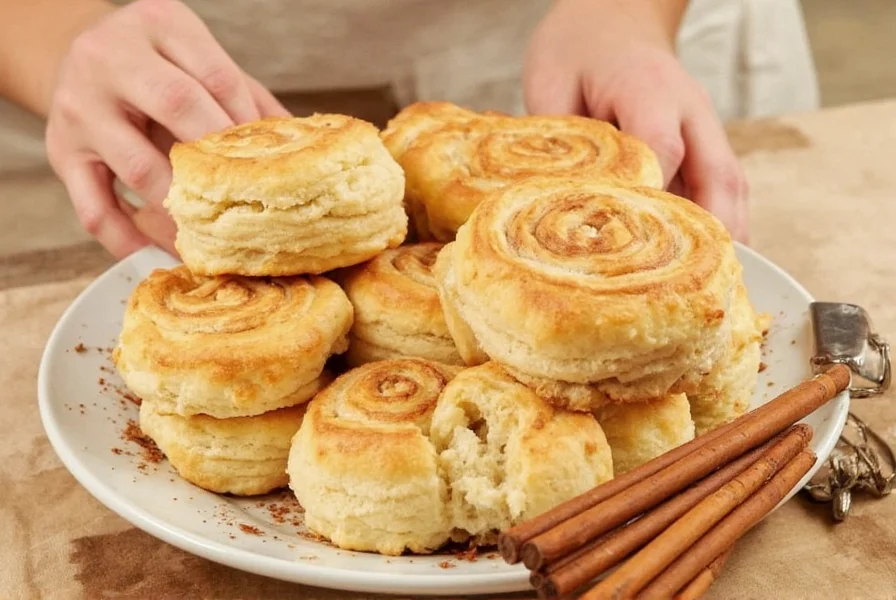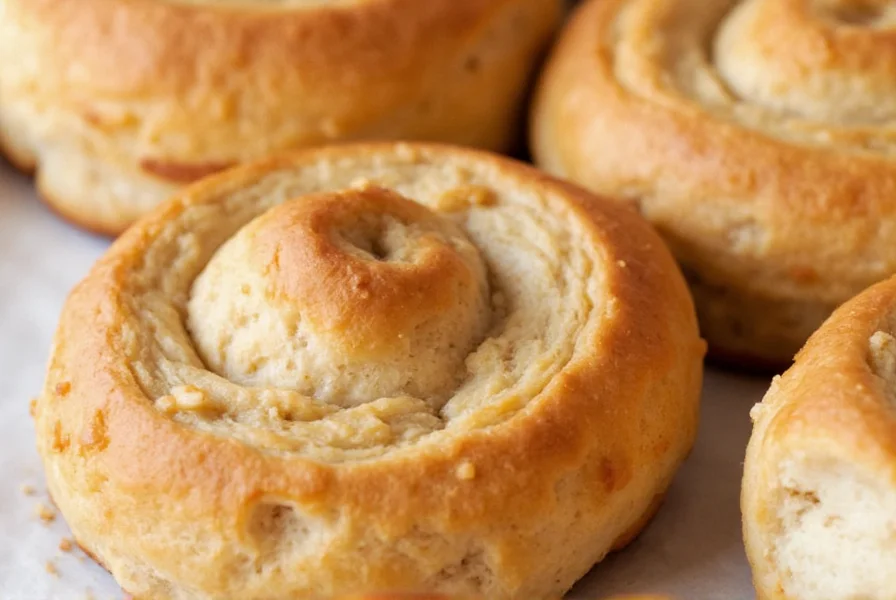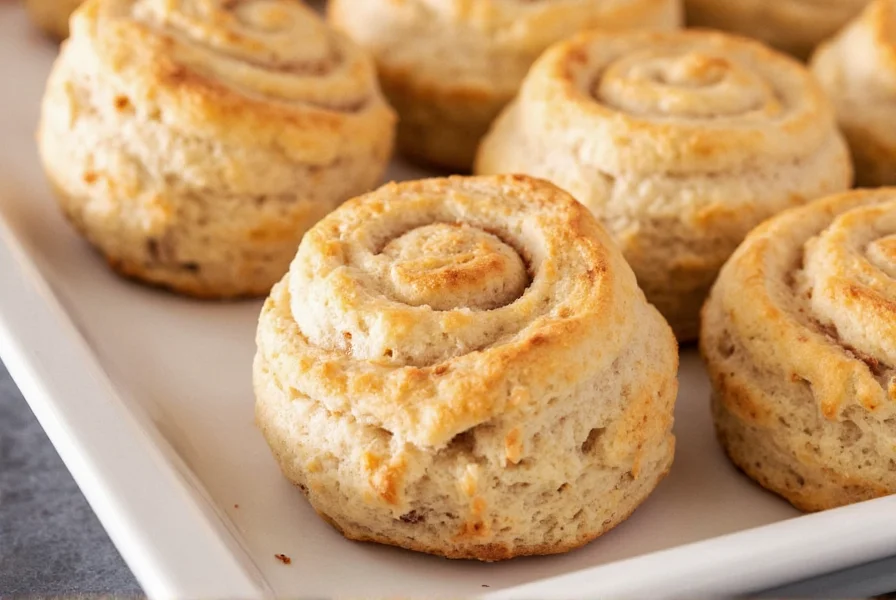When you're craving the comforting flavors of cinnamon rolls but don't have hours to wait for dough to rise, biscuit cinnamon buns offer the perfect solution. This clever adaptation uses refrigerated biscuit dough as the foundation, eliminating the lengthy proofing process while still delivering that signature swirl of cinnamon and sweet icing. The result is a delightfully soft, slightly chewy pastry with all the flavor of traditional cinnamon rolls in a fraction of the time.
The Science Behind Successful Biscuit Cinnamon Buns
Understanding the chemistry behind this shortcut recipe explains why it works so well. Canned biscuits contain chemical leaveners (baking powder and baking soda) that activate when heated, creating the rise without requiring yeast fermentation. When you flatten and roll these biscuits with cinnamon sugar, the heat causes the sugar to caramelize slightly while the biscuit dough transforms into a tender, cake-like texture.
Professional bakers note that the key to exceptional biscuit cinnamon buns lies in proper handling of the dough. Overworking the biscuits after opening the can can lead to tough buns, while under-flattening prevents proper rolling. The ideal thickness is approximately ¼ inch - thin enough to roll easily but substantial enough to maintain structure during baking.
| Ingredient | Traditional Amount | Health-Conscious Swap | Flavor-Enhanced Option |
|---|---|---|---|
| Canned biscuits (8 count) | 1 can | Whole wheat biscuits | Buttermilk biscuits |
| Butter | ½ cup melted | Coconut oil | Browned butter |
| Cinnamon | 2 tbsp | 1½ tbsp | 2½ tbsp with cardamom |
| Sugar | ⅓ cup | Monk fruit sweetener | ⅓ cup + 2 tbsp brown sugar |
Step-by-Step Preparation Guide
Creating perfect biscuit cinnamon buns requires attention to detail at each stage. Begin by preheating your oven to 350°F (175°C) and preparing your baking dish with melted butter or non-stick spray. The quality of your easy biscuit cinnamon buns recipe depends significantly on proper temperature management throughout the process.
- Prepare the filling: Mix ⅓ cup sugar with 2 tablespoons cinnamon in a shallow dish. For richer flavor in your quick cinnamon buns using biscuits, add ¼ teaspoon nutmeg or cardamom.
- Handle the biscuits carefully: Open the can of biscuits without squeezing them. Gently separate each biscuit and flatten to ¼-inch thickness using a rolling pin or your fingers. Avoid pressing the center too thin.
- Create the swirl: Dip each flattened biscuit into melted butter, then into the cinnamon-sugar mixture. Roll up from one edge to form a spiral, pinching the seam to seal.
- Arrange in pan: Place rolls seam-side down in a buttered 9x9-inch baking dish, leaving slight space between them for expansion.
- Bake to perfection: Bake for 18-22 minutes until golden brown. The internal temperature should reach 190°F (88°C) for optimal texture.
- Apply finishing touches: While still warm, drizzle with icing made from powdered sugar, milk, and vanilla.
Common Mistakes and How to Avoid Them
Even experienced bakers encounter issues with biscuit cinnamon buns vs traditional rolls. Understanding these common pitfalls ensures consistent results:
- Soggy bottoms: Caused by insufficient preheating of the baking dish or too much butter in the pan. Solution: Use just enough butter to coat the bottom lightly.
- Collapsed centers: Results from overfilling with cinnamon mixture. Keep filling to no more than 1 tablespoon per biscuit.
- Dry texture: Occurs when biscuits are overbaked. Check at 18 minutes and remove when golden but still slightly soft to touch.
- Unraveling rolls: Happens when seams aren't properly sealed. Pinch the edge firmly after rolling.
For those troubleshooting their troubleshooting biscuit cinnamon buns attempts, consider the biscuit brand you're using. Different brands have varying moisture content and rise characteristics. Pillsbury Grands! tends to produce taller, fluffier results while store brands may yield denser buns.
Creative Variations to Elevate Your Recipe
Once you've mastered the basic best biscuit cinnamon buns method, experiment with these professional-inspired variations:
- Cheesecake swirl: Add 2 ounces softened cream cheese to the cinnamon sugar mixture for a tangy contrast.
- Apple cinnamon: Incorporate ½ cup finely diced apples (sautéed first with 1 tablespoon butter) into the filling.
- Chocolate drizzle: Melt ¼ cup chocolate chips with 1 teaspoon shortening for a decadent topping.
- Maple bacon: Sprinkle crumbled cooked bacon between the layers and use maple syrup in the icing.

Storage and Reheating Techniques
Proper storage maintains the quality of your creative variations for biscuit cinnamon buns. Store cooled buns in an airtight container at room temperature for up to 2 days. For longer storage, freeze individually wrapped buns for up to 3 months.
When reheating, avoid the microwave which creates uneven texture. Instead, place buns on a baking sheet and warm in a 300°F (150°C) oven for 8-10 minutes until heated through. For frozen buns, add 3-5 minutes to the reheating time. This method preserves the delicate balance between soft interior and slightly crisp edges that defines perfect canned biscuit cinnamon roll substitute.

Frequently Asked Questions
Can I make biscuit cinnamon buns ahead of time?
Yes, you can prepare biscuit cinnamon buns ahead of time. Assemble the rolls but don't bake them, then cover tightly and refrigerate overnight. When ready to bake, remove from refrigerator while oven preheats (about 20 minutes), then bake as directed. The cold dough may require 2-3 additional minutes of baking time.
Why do my biscuit cinnamon buns fall apart when rolling?
This typically happens when the biscuit dough is too cold or overworked. Allow biscuits to sit at room temperature for 5-7 minutes after opening the can. Handle them gently when flattening - use a light touch with the rolling pin and avoid pressing too hard. If biscuits crack when rolling, they've been flattened too thin or worked too much.
What's the difference between biscuit cinnamon buns and traditional cinnamon rolls?
Traditional cinnamon rolls use yeast-raised dough requiring multiple hours for rising, resulting in a chewier texture and more complex flavor development. Biscuit cinnamon buns use chemical-leavened dough with no rising time needed, creating a quicker, cake-like texture. The flavor profile is similar but the texture and preparation time differ significantly.
Can I use gluten-free biscuits for cinnamon buns?
Yes, gluten-free biscuits work for cinnamon buns, but require some adjustments. Gluten-free dough tends to be more fragile, so flatten biscuits between sheets of parchment paper. You may need to reduce baking time by 2-3 minutes as gluten-free products often cook faster. The texture will be slightly different but still delicious.
How can I make my biscuit cinnamon buns extra gooey?
For extra gooey biscuit cinnamon buns, increase the butter in the pan to ⅓ cup and add 2 tablespoons of brown sugar to the melted butter. When rolling, include 1-2 raisins or a small piece of chopped pecan in each roll. The additional sugar creates a caramelized bottom layer while the fruit or nuts provide pockets of intense flavor.











 浙公网安备
33010002000092号
浙公网安备
33010002000092号 浙B2-20120091-4
浙B2-20120091-4